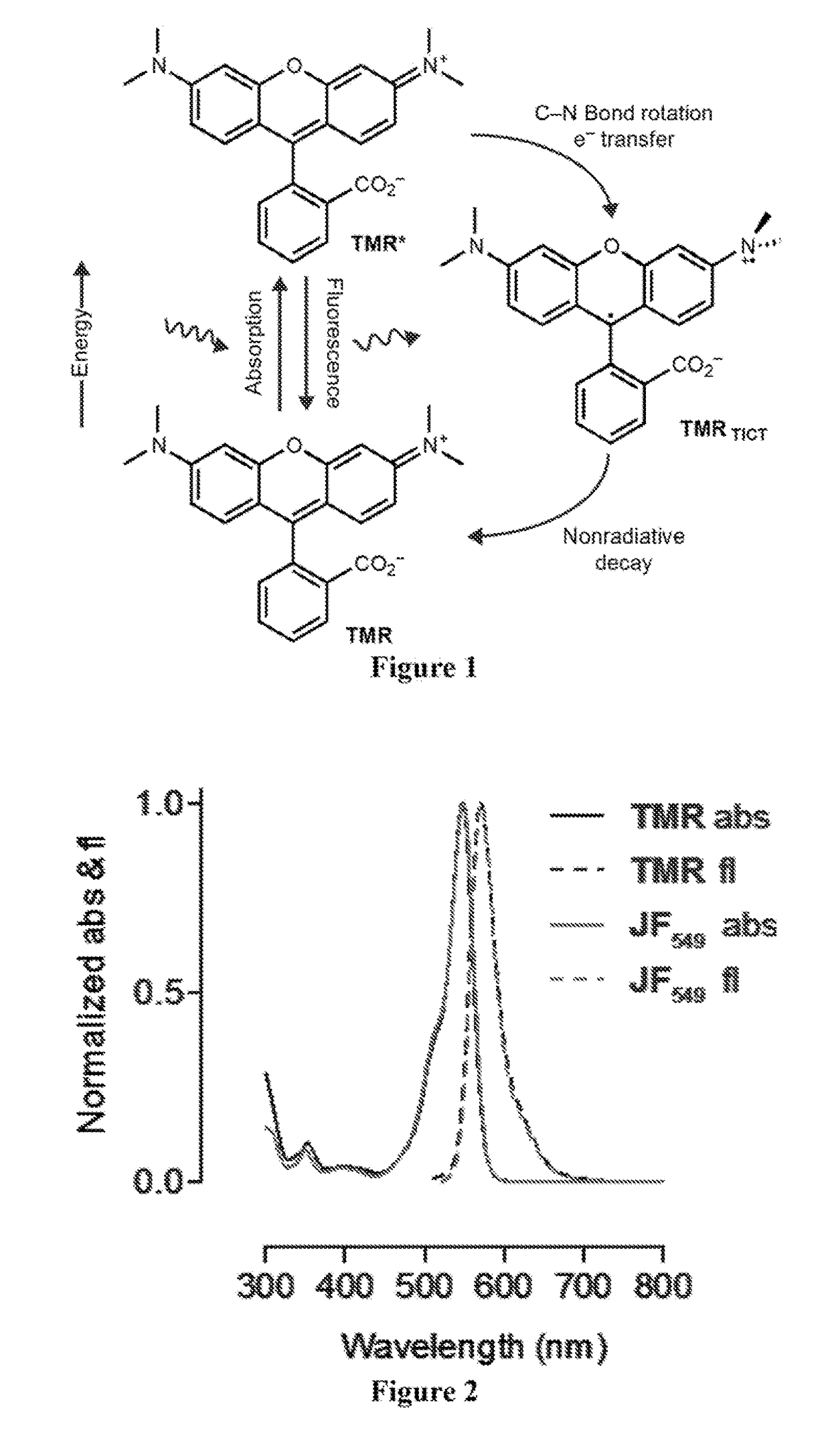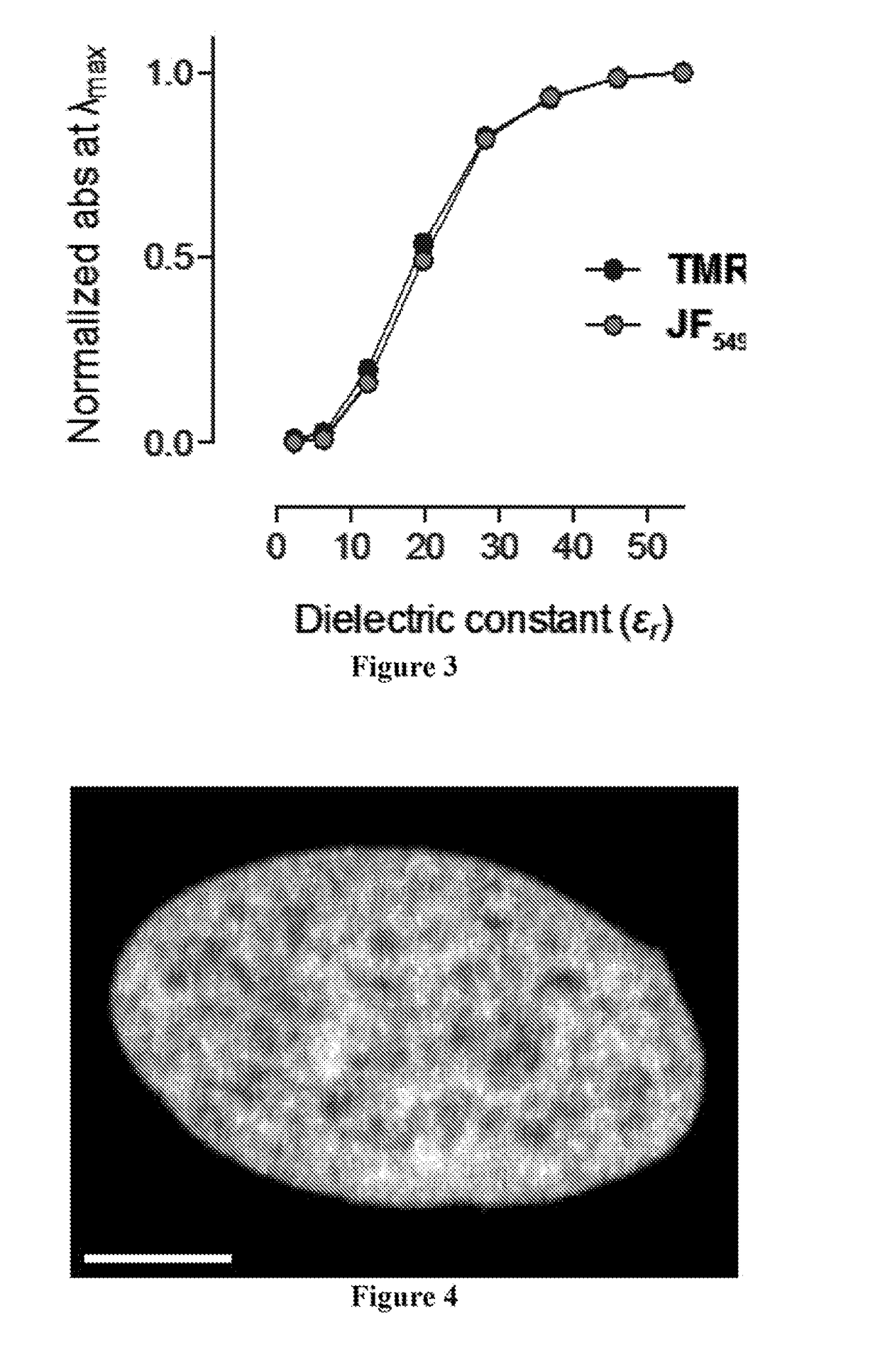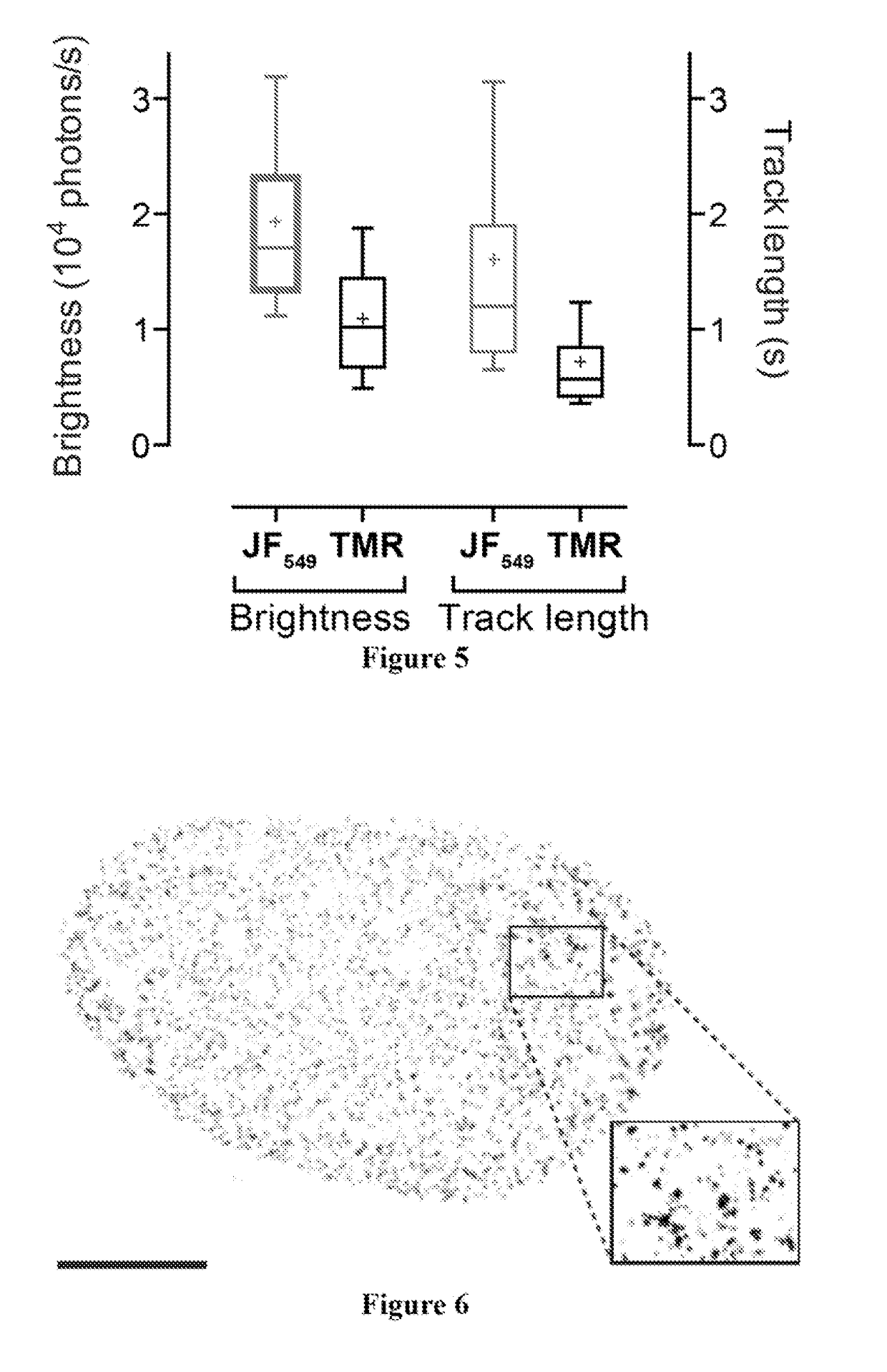Azetidine-substituted fluorescent compounds
a technology of fluorescent compounds and azetidine, which is applied in the field of fluorescent compounds, can solve the problems of limited intracellular self-labeling tag ligands, lack of requisite photostability of proteinous dyes for many applications, and relatively few exhibit the cell permeability needed for intracellular labeling, and achieves the effect of greater quantum yield
- Summary
- Abstract
- Description
- Claims
- Application Information
AI Technical Summary
Benefits of technology
Problems solved by technology
Method used
Image
Examples
example 1
[0228]This Example characterizes a structural modification to improve the brightness and photostability of rhodamine dyes, and specifically a novel azetidinyl auxochrome that elicited an increase in quantum efficiency relative to the parent dye. The facile synthesis of the azetidinyl rhodamine dye preserved the spectral properties, cell permeability, and utility of parent dye. Computational experiments were performed using the commercial software package Spartan'10 (version 1.1.0, Wavefunction).
[0229]The simplest known rhodamine fluorophore, rhodamine 110 (Table 2), exhibits an absorption maximum in the blue (λmax=497 nm) with a high extinction coefficient (∈=7.6×104 M−1 cm−1), emission in the green (λcm=520 nm), and a high quantum yield (φ=0.88). Alkylation of the rhodamine elicits a bathochromic shift in absorption and fluorescence emission wavelengths. For example, tetramethylrhodamine (TMR) shows λmax / λcm=548 / 572 nm and ∈=7.8×104 M−1 cm−1 (Table 2). This shift in spectral proper...
example 2
[0238]This Example describes procedures performed to evaluate the performance of the dye JF549 as a label in cellular imaging. JF549-HaloTag ligand (Example 21) was synthesized starting from a 6-carboxyfluorescein derivative. The diacetate derivative of 6-carboxyfluorescein was first protected as a tert-butyl ester. The acetate groups were saponified with NaOH, and this intermediate was triflated to give 6-tert-carboxyfluorescein ditriflate in 69% yield over two steps. Cross-coupling with azetidine gave the rhodamine, which was deprotected to yield the carboxylic acid. Treatment of the carboxylic acid with DSC followed by reaction with HaloTag(O2)amine yielded JF549-HaloTag ligand (Example 21). This molecule was a direct analog of the commercial TMR-based HaloTag ligand. Notably, rhodamine dyes exist in equilibrium between an “open,” zwitterionic, quinoid form and a “closed,” lipophilic, lactone form. This dynamic amphipathicity makes net neutral rhodamines such as rhodamine 110, TM...
example 3
[0242]This Example describes the extension of azetidinyl substitution to other dye scaffolds, including other red-shifted isologs of rhodamines containing carbon and silicon atoms. This Example demonstrates that the azetidinyl substitution is generalizable to different fluorophore scaffolds and can produce increases in brightness relative to the original parent fluorophore scaffolds.
[0243]The N,N-dialkyl motif is found in numerous classic fluorophore scaffolds (Table 3), including coumarins (e.g., Coumarin 461), acridines (e.g., Acridine Orange), rhodols, carborhodamines, oxazines (e.g., Oxazine 1), and silarhodamines. TICT has been proposed as a major contributor to nonradiative decay in these fluorescent systems, leading to modest quantum efficiencies. As with the rhodamines described in the previous examples, a Pd-catalyzed cross-coupling approach was used to install the azetidine motif in these fluorophores, starting from accessible aryl halides or aryl triflates.
[0244]
TABLE 3Sp...
PUM
| Property | Measurement | Unit |
|---|---|---|
| wavelength | aaaaa | aaaaa |
| pH | aaaaa | aaaaa |
| absorption wavelengths | aaaaa | aaaaa |
Abstract
Description
Claims
Application Information
 Login to View More
Login to View More - R&D
- Intellectual Property
- Life Sciences
- Materials
- Tech Scout
- Unparalleled Data Quality
- Higher Quality Content
- 60% Fewer Hallucinations
Browse by: Latest US Patents, China's latest patents, Technical Efficacy Thesaurus, Application Domain, Technology Topic, Popular Technical Reports.
© 2025 PatSnap. All rights reserved.Legal|Privacy policy|Modern Slavery Act Transparency Statement|Sitemap|About US| Contact US: help@patsnap.com



